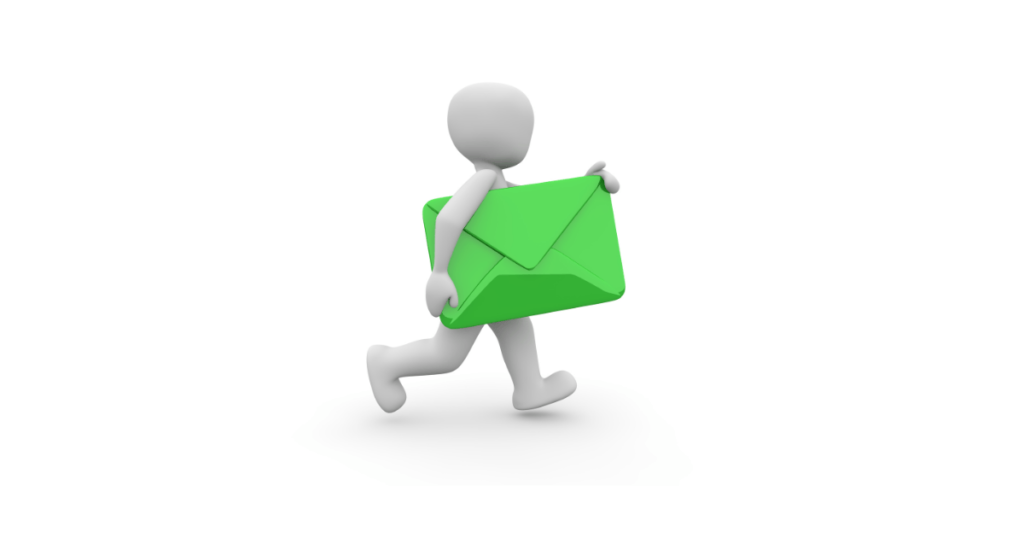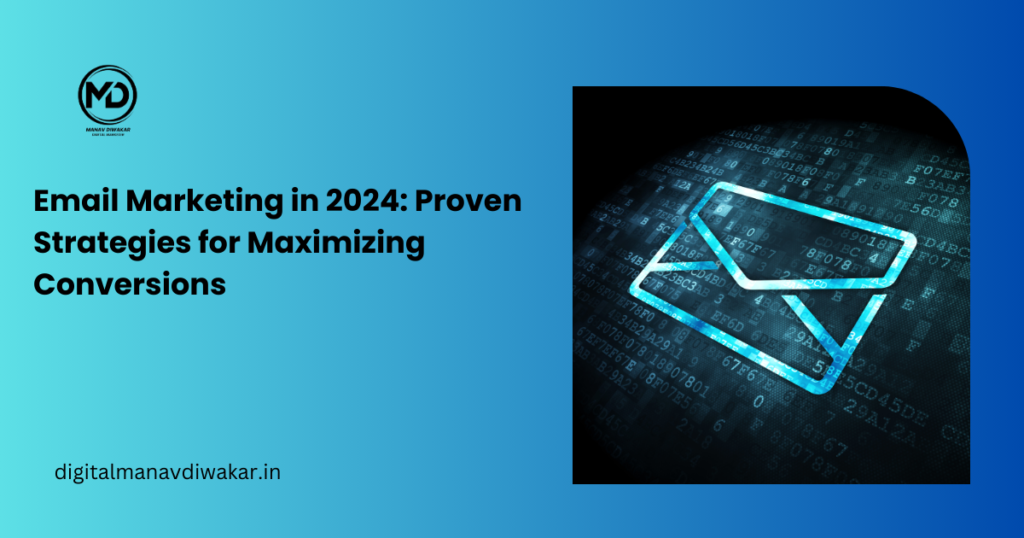Introduction
- Importance of email marketing in 2024 for driving conversions.
- How email marketing remains a cost-effective and high ROI channel.
- Brief overview of emerging trends in email marketing.

1. Personalization and Segmentation
- Why segmentation is critical to targeting the right audience.
- Using personalization to boost engagement and conversions.
- Dynamic content: How to tailor email content based on subscriber data.
- Case studies or examples of successful segmentation strategies.
2. Optimizing Email Subject Lines
- Importance of crafting compelling subject lines to increase open rates.
- A/B testing different subject lines to find what resonates with your audience.
- Best practices for subject lines: personalization, length, emojis, urgency.
3. Automation for Efficiency
- Overview of email automation tools and workflows.
- Key automated email campaigns: welcome series, abandoned cart emails, re-engagement campaigns.
- How to leverage behavioral triggers to send timely and relevant emails.
4. Creating High-Converting Email Content
- Tips for writing compelling copy that converts.
- Incorporating storytelling, urgency, and clear CTAs (calls-to-action).
- Best practices for email design: mobile optimization, visuals, and layout.
- The role of interactive elements like polls, videos, or GIFs in boosting engagement.
5. Building and Maintaining a Healthy Email List
- Best practices for growing an email list through lead magnets, website pop-ups, and landing pages.
- How to clean and maintain a high-quality list to avoid spam filters and ensure deliverability.
- Understanding GDPR and privacy regulations in email marketing.
6. Timing and Frequency of Email Campaigns
- Analyzing the best times to send emails based on your target audience.
- How often should you send emails to balance engagement and avoid unsubscribes?
- Using analytics to refine email timing and frequency for higher conversions.
7. A/B Testing and Data-Driven Optimization
- Importance of split testing various email elements (subject lines, copy, design, CTA).
- Key metrics to track: open rates, click-through rates, conversion rates, unsubscribe rates.
- Using data insights to continuously improve your email marketing strategy.
8. Integrating Email Marketing with Other Channels
- How email marketing fits into an omnichannel strategy.
- Integrating email with social media, SMS, and retargeting ads.
- Using customer data from other channels to inform email campaigns.
In 2024, email marketing remains one of the most effective channels for driving conversions and building long-lasting customer relationships. While social media and other digital marketing strategies have their place, email continues to deliver one of the highest ROIs (return on investment) for businesses, making it a crucial part of any marketing strategy. However, the landscape of email marketing has evolved, and to stay ahead of the competition, brands need to leverage advanced strategies that maximize engagement and, more importantly, conversions.
In this guide, we will explore proven strategies for optimizing your email marketing efforts to boost conversions and make the most out of your campaigns in 2024.
1. Personalization and Segmentation
One-size-fits-all emails are a thing of the past. Personalization and segmentation are now the cornerstones of successful email marketing. Customers expect emails that speak directly to their needs, preferences, and behaviors.
- Segmentation: The first step in effective personalization is proper segmentation. Grouping your audience based on demographics, past behavior, or purchasing history allows you to send more relevant messages. For example, you might create segments for new subscribers, loyal customers, or those who haven’t engaged in a while.
- Personalization: Personalized emails can increase click-through rates and conversions significantly. This goes beyond simply using the recipient’s name. Advanced personalization includes recommendations based on browsing behavior, purchase history, or location-specific offers. Tools that use dynamic content allow you to tailor different sections of an email for different audience segments within the same campaign.
By focusing on personalization and segmentation, you’ll be able to send targeted emails that resonate with your audience and lead to higher conversions.
2. Optimizing Email Subject Lines
The subject line is the gateway to your email. It’s the first thing your audience sees, and if it’s not compelling, your carefully crafted email content may never get read.
- Compelling Subject Lines: Your subject line should be clear, engaging, and hint at the value the recipient will gain by opening the email. Use action-oriented language that creates curiosity or offers a solution to a pain point.
- A/B Testing: A/B testing different subject lines allows you to see which styles resonate more with your audience. You can test for elements like length, tone, and the inclusion of emojis or numbers.
- Best Practices: Keep subject lines concise, typically under 50 characters. Personalize when possible, and experiment with creating a sense of urgency (e.g., “Last Chance to Save 20%!”) or exclusivity (e.g., “Just for You: Early Access to Our New Collection”).
An optimized subject line is key to increasing your open rates, which is the first step in driving conversions.
3. Automation for Efficiency
Email marketing automation allows you to send the right message at the right time without manually scheduling each campaign. Automated workflows improve efficiency while driving conversions through timely and relevant emails.
- Welcome Series: New subscribers should receive an automated series of welcome emails introducing your brand, your products, and offering a first-time customer discount to encourage an initial purchase.
- Abandoned Cart Emails: If a customer leaves items in their cart without completing the purchase, automated abandoned cart emails can remind them to complete the checkout process. Adding personalized recommendations or a special discount for finishing the purchase can dramatically improve conversion rates.
- Behavioral Triggers: You can set up behavioral triggers that send emails based on a subscriber’s activity, such as browsing a specific category or viewing a particular product.
Automation ensures that your audience receives relevant and timely emails, leading to higher engagement and conversions without the manual effort.

4. Creating High-Converting Email Content
Once your audience opens your email, your content needs to be persuasive enough to drive conversions. Crafting compelling copy and designing visually appealing emails can make all the difference.
- Compelling Copy: Your email copy should be concise, benefit-driven, and focused on solving the recipient’s problem. Use storytelling to create an emotional connection with your audience, and always include a clear call-to-action (CTA) that directs them toward the next step.
- Design and Layout: Email design should be clean and mobile-optimized. Many recipients will open your emails on their phones, so make sure your layout, images, and CTA buttons look good on smaller screens. Use visuals like product images, videos, or GIFs to break up text and keep readers engaged.
- Interactive Elements: Consider adding interactive elements like polls, quizzes, or video embeds to boost engagement. These features encourage recipients to spend more time in the email and increase the likelihood of them taking the desired action.
High-quality content that is easy to read and visually appealing will help guide your audience toward conversion.
5. Building and Maintaining a Healthy Email List
A healthy, engaged email list is the foundation of successful email marketing. You want subscribers who are genuinely interested in your content, as they are more likely to convert.
- List Building: Use lead magnets, such as free resources, discount codes, or exclusive content, to entice website visitors to sign up for your email list. Pop-ups, embedded sign-up forms, and dedicated landing pages are all effective ways to capture leads.
- List Maintenance: Regularly clean your email list by removing inactive subscribers who haven’t engaged with your emails in a long time. This improves deliverability rates and ensures that your emails don’t end up in spam folders.
- Compliance: With regulations like GDPR, it’s essential to ensure that your email marketing practices comply with data privacy laws. Always get explicit consent from subscribers and provide easy opt-out options.
A well-maintained list ensures your emails reach the right audience and are more likely to drive conversions.
6. Timing and Frequency of Email Campaigns
Knowing when to send your emails is just as important as the content. Sending too frequently can annoy subscribers, while sending too infrequently can lead to disengagement.
- Best Timing: The best time to send emails depends on your audience and industry. Analyze past campaigns to identify when your subscribers are most active. Generally, mid-week mornings (Tuesday-Thursday) have been shown to perform well.
- Frequency: There’s no one-size-fits-all answer to how often you should email your subscribers. The key is to maintain consistent communication without overwhelming them. Start with a regular cadence, such as weekly or bi-weekly, and adjust based on engagement rates.
Testing and analyzing the timing and frequency of your campaigns will help optimize performance and boost conversions.
7. A/B Testing and Data-Driven Optimization
Data is your best friend when it comes to optimizing email marketing for conversions. Continuously testing and refining your campaigns will yield better results over time.
- A/B Testing: Test various elements of your emails, including subject lines, content, design, CTA buttons, and send times. Split your audience into two groups and measure which variation performs better.
- Metrics to Track: Key metrics to monitor include open rates, click-through rates, conversion rates, and unsubscribe rates. Each metric provides insight into how well your emails are resonating with your audience.
Using data-driven insights will allow you to fine-tune your email marketing efforts and maximize conversions.
8. Integrating Email Marketing with Other Channels
Email marketing doesn’t exist in a vacuum. Integrating it with other marketing channels can amplify its impact and drive even more conversions.
- Omnichannel Approach: Combine email with social media, SMS, and retargeting ads to create a seamless customer journey. For example, you can use email to promote a product launch while running Facebook ads that target email subscribers who didn’t open the launch email.
- Cross-Channel Data: Use insights from other channels, such as customer behavior on your website or social media, to inform your email content and campaigns.
A coordinated omnichannel strategy helps reinforce your message and boosts conversions across all channels.
Conclusion
In 2024, email marketing remains a powerful tool for maximizing conversions, but success requires a strategic approach. By leveraging personalization, automation, compelling content, and data-driven optimization, you can create high-converting email campaigns that engage your audience and drive measurable results. Stay ahead of the curve by integrating email marketing with other channels and keeping your finger on the pulse of emerging trends and technologies.
By implementing these proven strategies, your brand will be well-positioned to achieve success in email marketing in 2024.

Nice blog
Amazing 👍🏼
Informative 👏🏻
Thank you for sharing such kind of blog
This blog article provides a succinct yet insightful exploration of 2024’s email marketing landscape. The emphasis on hyper-personalization and granular segmentation is especially compelling, as these strategies are vital for fostering authentic audience engagement. Additionally, the focus on mobile optimization and interactive elements like polls demonstrates a keen understanding of how to capture attention in an increasingly saturated digital space. These innovative tactics are indispensable for driving conversion rates in today’s competitive environment. Thank you for the valuable insights!
It’s really helpful thanks for sharing!!!
It’s really informative, thanks for sharing!!!
Very Informative!
very informative and useful strategies!!!
Nice blog
great strategies